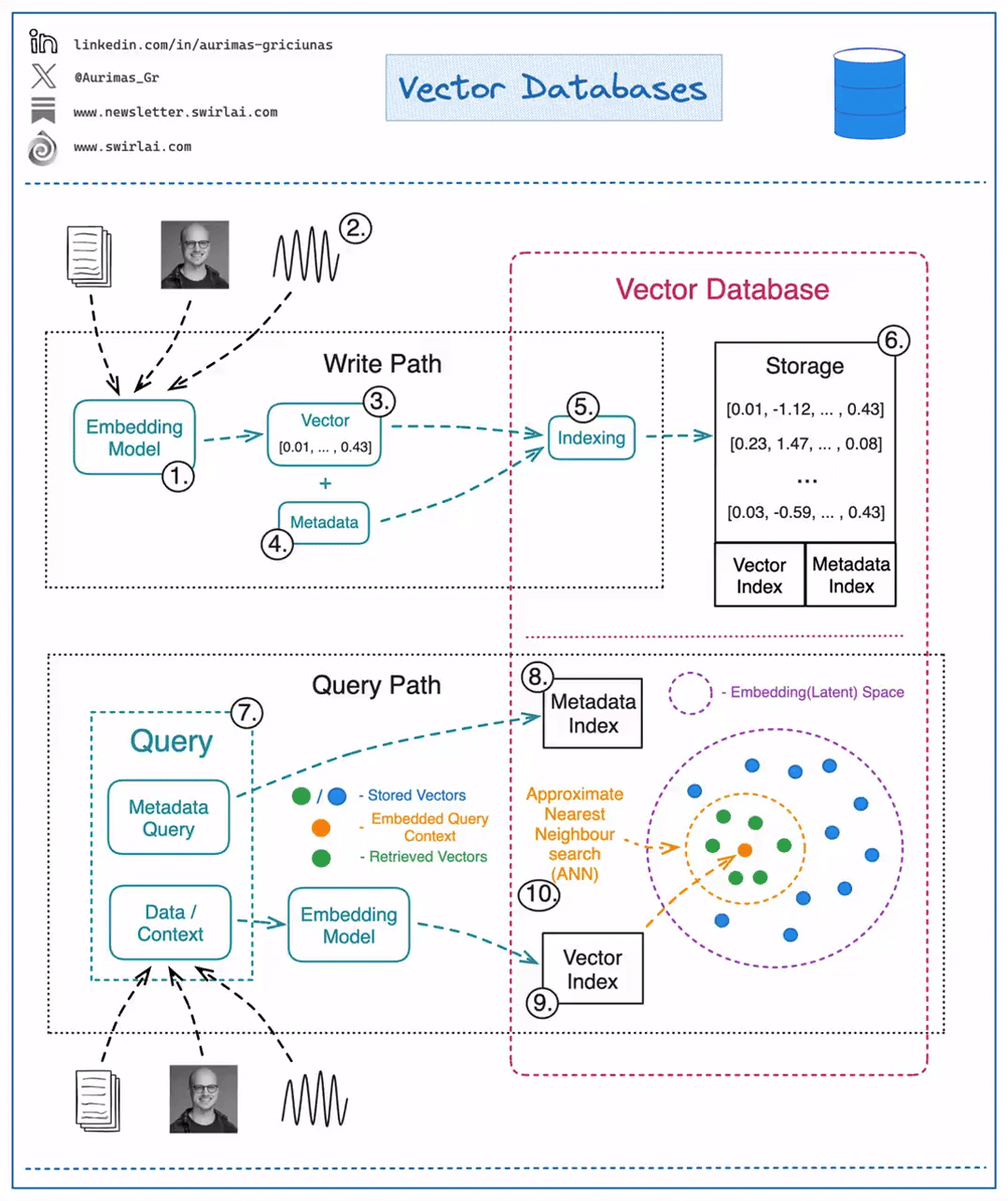What is a Vector Database?
With the rise of Foundational Models, Vector Databases skyrocketed in popularity. The truth is that a Vector Database is also useful outside of a Large Language Model context.
When it comes to Machine Learning, we often deal with Vector Embeddings. Vector Databases were created to perform specifically well when working with them:
- Storing
- Updating
- Retrieving
When we talk about retrieval, we refer to retrieving set of vectors that are most similar to a query in a form of a vector that is embedded in the same Latent space. This retrieval procedure is called Approximate Nearest Neighbour (ANN) search.
A query here could be in a form of an object like an image for which we would like to find similar images. Or it could be a question for which we want to retrieve relevant context that could later be transformed into an answer via a LLM.
Let's look into how one would interact with a Vector Database
Writing/Updating Data
- Choose a ML model to be used to generate Vector Embeddings.
- Embed any type of information: text, images, audio, tabular. Choice of ML model used for embedding will depend on the type of data.
- Get a Vector representation of your data by running it through the Embedding Model.
- Store additional metadata together with the Vector Embedding. This data would later be used to pre-filter or post-filter ANN search results.
- Vector DB indexes Vector Embedding and metadata separately. There are multiple methods that can be used for creating vector indexes, some of them: Random Projection, Product Quantization, Locality-sensitive Hashing.
- Vector data is stored together with indexes for Vector Embeddings and metadata connected to the Embedded objects.
Reading Data
A query to be executed against a Vector Database will usually consist of two parts:
- Data that will be used for ANN search. e.g. an image for which you want to find similar ones.
- Metadata query to exclude Vectors that hold specific qualities known beforehand. E.g. given that you are looking for similar images of apartments - exclude apartments in a specific location.
- You execute Metadata Query against the metadata index. It could be done before or after the ANN search procedure.
- You embed the data into the Latent space with the same model that was used for writing the data to the Vector DB.
- ANN search procedure is applied and a set of Vector embeddings are retrieved. Popular similarity measures for ANN search include: Cosine Similarity, Euclidean Distance, Dot Product.
动态数据流向,

